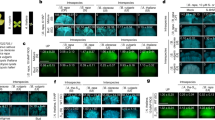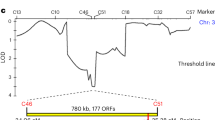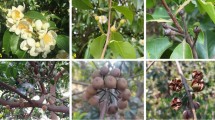Abstract
Self-incompatibility (rejection of ‘self’-pollen) is a reproductive barrier that allows hermaphroditic flowering plants to prevent inbreeding, to promote outcrossing and hybrid vigour. The self-incompatibility response in Brassica involves allele-specific interaction between the pollen small cysteine-rich, secreted protein ligand (SCR/SP11) and the stigmatic S-receptor kinase (SRK), which leads to the activation of the E3 ubiquitin ligase ARC1 (Armadillo repeat-containing 1), resulting in proteasomal degradation of compatibility factors needed for successful pollination. Despite this, targets of ARC1 and the intracellular signalling network that is regulated by these targets, have remained elusive. Here we show that glyoxalase I (GLO1), an enzyme that is required for the detoxification of methylglyoxal (MG, a cytotoxic by-product of glycolysis), is a stigmatic compatibility factor required for pollination to occur and is targeted by the self-incompatibility system. Suppression of GLO1 was sufficient to reduce compatibility, and overexpression of GLO1 in self-incompatible Brassica napus stigmas resulted in partial breakdown of the self-incompatibility response. ARC1-mediated destruction of GLO1 after self-pollination results in increased MG levels and a concomitant increase in MG-modified proteins (including GLO1), which are efficiently targeted for destruction in the papillary cells, leading to pollen rejection. Our findings demonstrate the elegant nature of plants to use a metabolic by-product to regulate the self-incompatibility response.
This is a preview of subscription content, access via your institution
Access options
Subscribe to this journal
Receive 12 digital issues and online access to articles
$119.00 per year
only $9.92 per issue
Buy this article
- Purchase on Springer Link
- Instant access to full article PDF
Prices may be subject to local taxes which are calculated during checkout





Similar content being viewed by others
References
Takayama, S. et al. The pollen determinant of self-incompatibility in Brassica campestris. Proc. Natl Acad. Sci. USA 97, 1920–1925 (2000).
Kachroo, A., Schopfer, C. R., Nasrallah, M. E. & Nasrallah, J. B. Allele-specific receptor-ligand interactions in Brassica self-incompatibility. Science 293, 1824–1826 (2001).
Shimosato, H. et al. Characterization of the SP11/SCR high-affinity binding site involved in self/nonself recognition in Brassica self-incompatibility. Plant Cell 19, 107–117 (2007).
Samuel, M. A., Yee, D., Haasen, K. E. & Goring, D. R. in Self-Incompatibility in Flowering Plants (ed. Franklin-Tong, V. E.) Ch. 8, 173–191 (Springer, 2008).
Samuel, M. A. et al. Cellular pathways regulating responses to compatible and self-incompatible pollen in Brassica and Arabidopsis stigmas intersect at Exo70A1, a putative component of the exocyst complex. Plant Cell 21, 2655–2671 (2009).
Samuel, M. A. et al. Proteomic analysis of Brassica stigmatic proteins following the self-incompatibility reaction reveals a role for microtubule dynamics during pollen responses. Mol. Cell. Proteomics 10, M111.011338 (2011).
Sankaranarayanan, S., Jamshed, M. & Samuel, M. A. Proteomics approaches advance our understanding of plant self-incompatibility response. J. Proteome Res. 12, 4717–4726 (2013).
Thornalley, P. J. The glyoxalase system: new developments towards functional characterization of a metabolic pathway fundamental to biological life. Biochem. J. 269, 1–11 (1990).
Thornalley, P. J. Protein and nucleotide damage by glyoxal and methylglyoxal in physiological systems--role in ageing and disease. Drug Metab. Drug Interact. 23, 125–150 (2008).
Hosoda, F. et al. Integrated genomic and functional analyses reveal glyoxalase I as a novel metabolic oncogene in human gastric cancer. Oncogene 34, 1196–206 (2015).
Morcos, M. et al. Glyoxalase-1 prevents mitochondrial protein modification and enhances lifespan in Caenorhabditis elegans. Aging Cell 7, 260–269 (2008).
Hovatta, I. et al. Glyoxalase 1 and glutathione reductase 1 regulate anxiety in mice. Nature 438, 662–666 (2005).
Kromer, S. A. et al. Identification of glyoxalase-I as a protein marker in a mouse model of extremes in trait anxiety. J. Neurosci. 25, 4375–4384 (2005).
Veena, Reddy, V. S. & Sopory, S. K. Glyoxalase I from Brassica juncea: molecular cloning, regulation and its over-expression confer tolerance in transgenic tobacco under stress. Plant J. 17, 385–395 (1999).
Ramaswamy, O., Pal, S., Guha-Mukherjee, S. & Sopory, S. K. Correlation of glyoxalase I activity with cell proliferation in Datura callus culture. Plant Cell Rep. 3, 121–124 (1984).
Kraus, J. L. & Castaing, M. Inhibition of yeast glyoxalase I by biologically active peptides. Res Commun. Chem. Pathol. Pharmacol. 65, 105–110 (1989).
Stone, S. L., Arnoldo, M. & Goring, D. R. A breakdown of Brassica self-incompatibility in ARC1 antisense transgenic plants. Science 286, 1729–1731 (1999).
Stone, S. L., Anderson, E. M., Mullen, R. T. & Goring, D. R. ARC1 is an E3 ubiquitin ligase and promotes the ubiquitination of proteins during the rejection of self-incompatible Brassica pollen. Plant Cell 15, 885–898 (2003).
Du, J., Zeng, J., Ou, X., Ren, X. & Cai, S. Methylglyoxal downregulates Raf-1 protein through a ubiquitination-mediated mechanism. Int. J. Biochem. Cell Biol. 38, 1084–1091 (2006).
Bento, C. F., Marques, F., Fernandes, R. & Pereira, P. Methylglyoxal alters the function and stability of critical components of the protein quality control. PloS ONE 5, e13007 (2010).
Shimakawa, G. et al. Why don't plants have diabetes? Systems for scavenging reactive carbonyls in photosynthetic organisms. Bioch. Soc. Trans. 42, 543–547 (2014).
Maher, P. et al. Fisetin lowers methylglyoxal dependent protein glycation and limits the complications of diabetes. PloS ONE 6, e21226 (2011).
Chen, M. & Thelen, J. J. The plastid isoform of triose phosphate isomerase is required for the postgerminative transition from heterotrophic to autotrophic growth in Arabidopsis. Plant Cell 22, 77–90 (2010).
Mustafiz, A. et al. A unique Ni2+-dependent and methylglyoxal-inducible rice glyoxalase I possesses a single active site and functions in abiotic stress response. Plant J. 78, 951–963 (2014).
Acknowledgements
We thank Dr Douglas Muench for the epi-fluorescence microscope facility and Dr Andre Buret for the microplate reader. We also thank Dr Daphne Goring for ARC1 antisense transgenic lines. This work was supported by the Natural Sciences and Engineering Research Council of Canada grants and start-up funds from the University of Calgary to M.A.S.
Author information
Authors and Affiliations
Contributions
S.S. and M.A.S. conceived and initiated the project. S.S. and M.A.S. designed the research; S.S. performed all the experiments, and M.J. was responsible for analysis of subcellular localization of GLO1 and confocal microscopy; S.S., M.J. and M.A.S. analysed the data; S.S. and M.A.S. wrote the manuscript. All authors discussed the results and commented on the manuscript.
Corresponding author
Ethics declarations
Competing interests
The authors declare no competing financial interests.
Supplementary information
Rights and permissions
About this article
Cite this article
Sankaranarayanan, S., Jamshed, M. & Samuel, M. Degradation of glyoxalase I in Brassica napus stigma leads to self-incompatibility response. Nature Plants 1, 15185 (2015). https://doi.org/10.1038/nplants.2015.185
Received:
Accepted:
Published:
DOI: https://doi.org/10.1038/nplants.2015.185



